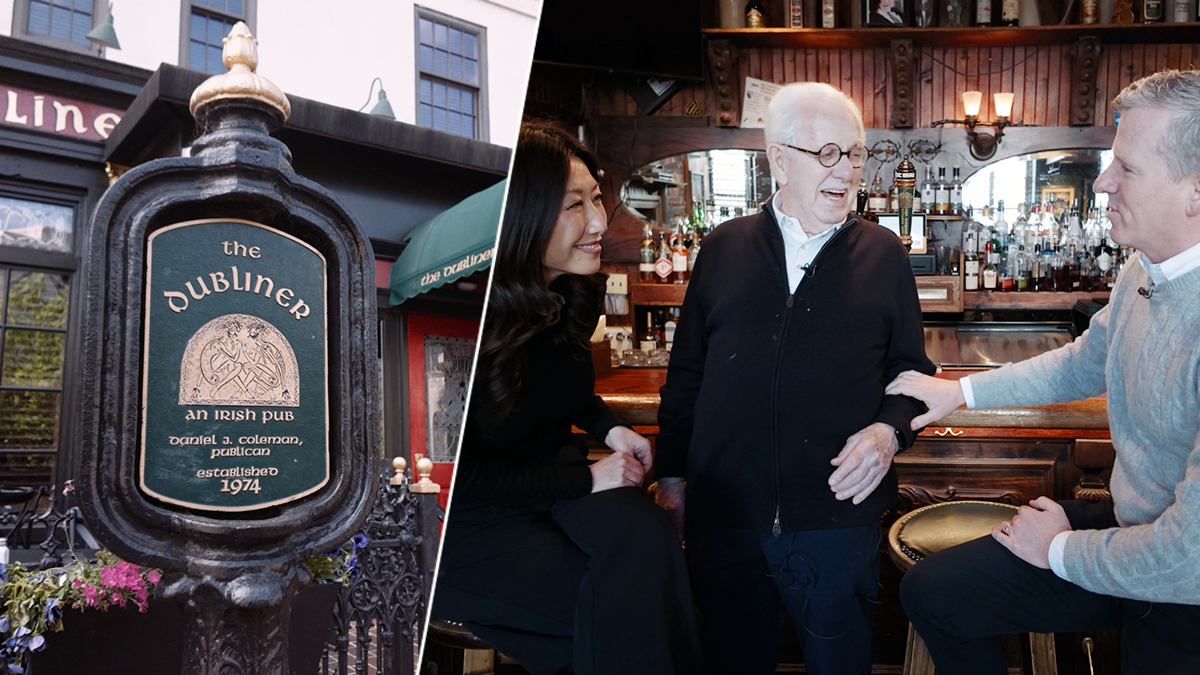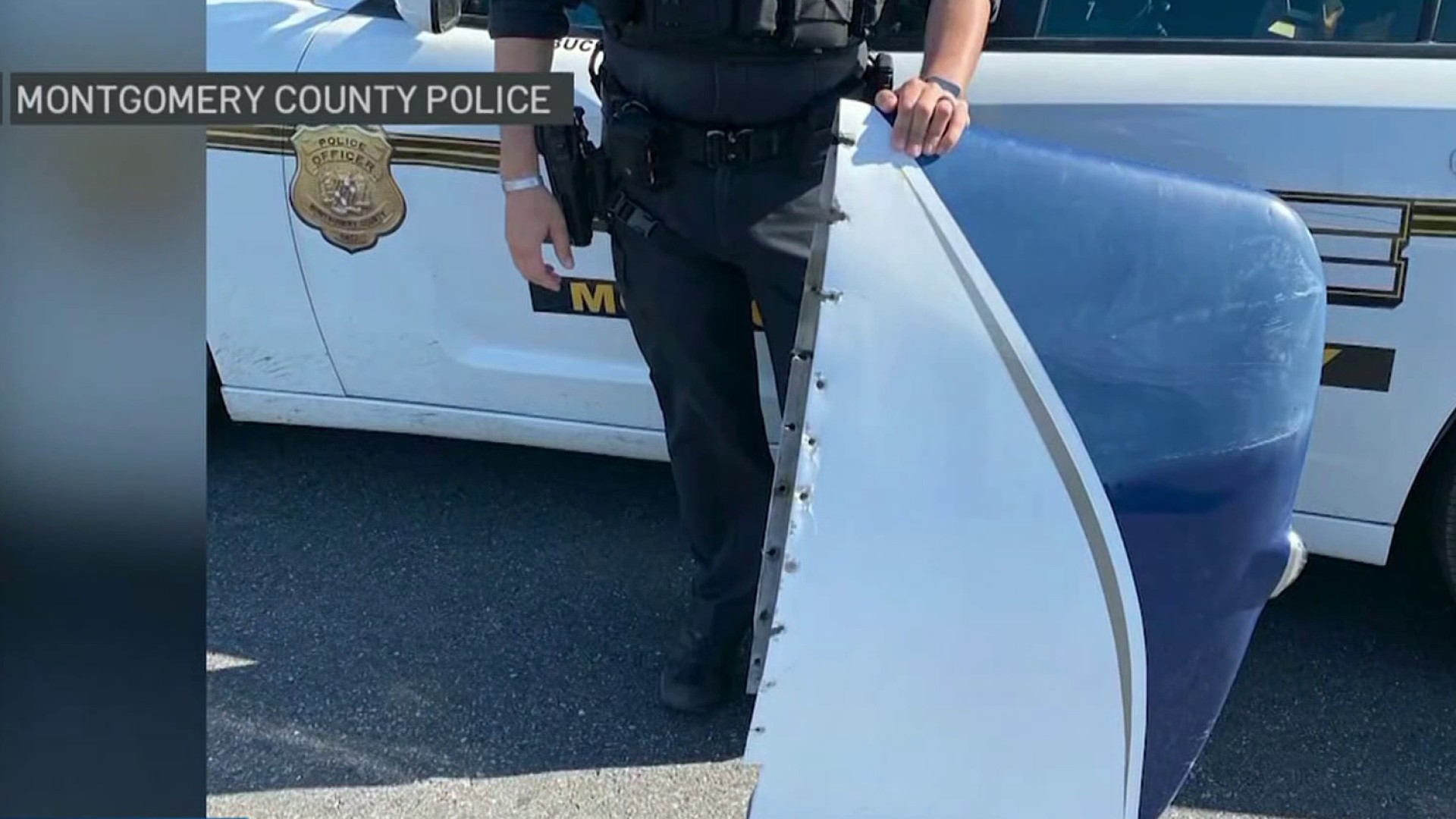What to Know
- The city historically planted and maintained more trees in the richest neighborhoods of D.C., not the poorest neighborhoods.
- Officials have worked for decades and used data to help increase tree cover citywide, which benefits the health of neighborhoods.
- Making the District greener will take time because trees grow "one leaf at a time."
Earlier this year in Northeast D.C., a line of scrawny trees sprouted leaves for the first time.
City crews planted elms, redbuds and other varieties outside the Lincoln Heights public housing complex as part of a yearslong effort to beautify the District.
The District Department of Transportation (DDOT) is planting trees in spaces along roadsides across the city, but there is a 40 percent difference between the number of empty tree spaces in the poorest wards of the District and the number of empty spaces in some of the richest wards.
D.C. officials have worked for decades to bulk up tree cover in neighborhoods across the city, but trees grow slowly and it still could take years before trees are more evenly distributed, officials said.
"There's clearly an imbalance," said Brenda Richardson, a Ward 8 resident and community environmental advocate.
In Wards 7 and 8, about 11 percent of the spaces identified for planting street trees, what the city calls tree boxes, are empty. In contrast, Wards 3 and 4 have a quarter more spaces where trees can be planted, and only about 5 percent of those spaces are empty.
Local
Washington, D.C., Maryland and Virginia local news, events and information
The median household income between 2011 and 2015 in Ward 7 was about $39,000. It’s even lower in Ward 8. In the Ward 3, the median household income was more than two-and-a-half times the income in Ward 7.
City arborists expect that in the next three to five years, a tree will be planted in every tree box. But these boxes make up only a portion of the trees in the city.
In an October 2017 study of D.C. and Baltimore, researchers found that stable, wealthy neighborhoods were more likely to have higher tree cover than poorer ones.
West of Rock Creek Park are some of the greenest neighborhoods in D.C. It's also where some of the city's highest earners live.
Street Trees
More than 10,000 tree boxes are currently empty citywide, according to an analysis of the DDOT Urban Forestry Division tree inventory. The inventory tracks how many trees are planted, tree condition and where future trees will be planted.
if("undefined"==typeof window.datawrapper)window.datawrapper={};window.datawrapper["ykucX"]={},window.datawrapper["ykucX"].embedDeltas={"100":382,"200":324,"300":295,"400":266,"500":266,"700":266,"800":266,"900":266,"1000":266},window.datawrapper["ykucX"].iframe=document.getElementById("datawrapper-chart-ykucX"),window.datawrapper["ykucX"].iframe.style.height=window.datawrapper["ykucX"].embedDeltas[Math.min(1e3,Math.max(100*Math.floor(window.datawrapper["ykucX"].iframe.offsetWidth/100),100))]+"px",window.addEventListener("message",function(a){if("undefined"!=typeof a.data["datawrapper-height"])for(var b in a.data["datawrapper-height"])if("ykucX"==b)window.datawrapper["ykucX"].iframe.style.height=a.data["datawrapper-height"][b]+"px"});
Getting down to that number of empty tree boxes and adding new ones in a city with over 160,000 has taken a long time. Since 2008, the city has planted nearly 57,000 trees in tree boxes. Nearly half of those trees were planted in Wards 5, 7 and 8.
“It is a huge lift to plant this amount of trees,” Earl Eutsler, associate director of DDOT's Urban Forestry Division, said. “We’re planting in four new trees for every one we remove.”
Crews typically plant trees between October and May, and spend the rest of the year on maintenance, Eutsler said. On-average, about 90 percent of the trees planted survive.
A diverse mix of species like oaks, maples, cherry trees and sycamores are planted. That practice ensures that the urban forest isn’t susceptible to a disease or pest that targets one type of tree.
The tree boxes in Wards 1, 2 and 6 — the densest parts of the city — are almost completely filled. That’s partly because the areas have fewer places to put trees and the number of places to put trees remains steady, Eutsler said.
if("undefined"==typeof window.datawrapper)window.datawrapper={};window.datawrapper["cgUHO"]={},window.datawrapper["cgUHO"].embedDeltas={"100":339,"200":252,"300":223,"400":223,"500":194,"700":194,"800":194,"900":194,"1000":194},window.datawrapper["cgUHO"].iframe=document.getElementById("datawrapper-chart-cgUHO"),window.datawrapper["cgUHO"].iframe.style.height=window.datawrapper["cgUHO"].embedDeltas[Math.min(1e3,Math.max(100*Math.floor(window.datawrapper["cgUHO"].iframe.offsetWidth/100),100))]+"px",window.addEventListener("message",function(a){if("undefined"!=typeof a.data["datawrapper-height"])for(var b in a.data["datawrapper-height"])if("cgUHO"==b)window.datawrapper["cgUHO"].iframe.style.height=a.data["datawrapper-height"][b]+"px"});
A Retreating Canopy
In the 1970s through 1990s, people moved out of D.C. and took the city’s tax base with them. Between 1973 and 1997, the District’s tree cover declined by 16 percent. There was less money for projects to maintain trees and replace dead ones, according to a city report. The decline also caused a 34 percent increase in stormwater runoff, the report said.
By the '90s, crime rates were high and trees were not being maintained. In '95 and ‘96, trees were dying at a rate of about 4,000 per year, according to a Washington Post article.
After media raised the alarm on the District’s shrinking tree canopy, the city reinvigorated its effort to plant and maintain its trees. In '99, the city budgeted $9 million to recover the lost tree cover. Today the budget is around $15 million annually, Eutsler said.
In the past, one of the main methods officials relied on to direct tree planting efforts was calls to 311, which played a part in exacerbating disparities.
In places where residents had tree-lined streets, it wasn’t uncommon for the city to get requests from several neighbors, Eutsler said. There were fewer, if any, calls from places that didn’t have as many trees.
Combining 311 calls with a proactive inventory helped the city plant trees more fairly.
A city study found that tree cover increased about 5 percent in both Wards 7 and 8 between '06 and '15.
Advocate Richardson, a self-described eco-feminist who has been involved in environmental justice, economic development and health issues for a quarter-century, complimented the city's efforts. She said she believes that as more trees are planted, more neighbors will advocate for greener neighborhoods.
"When I look at imbalance, it has a lot to do with people’s lack of information. And it’s not something that anybody imposed on us because we are poor," Richardson said. "The issue is that we just didn’t have the information that we could have more trees."
Adding trees is so important, because they build community, and give people a sense of pride in their neighborhoods.
"When I drive home and I see the tree canopy, it’s just very enlightening and comforting to think, 'that’s my neighborhood,'" Richardson said.
Community Concerns
In less affluent parts of the city, trees sometimes are not a top priority for residents, they say. Some say trees require too much maintenance or worry they can provide hiding places for criminals.
Longtime Ward 7 resident and environmental advocate Dennis Chestnut grew up near Northeast D.C.’s Deanwood neighborhood.
The 69-year-old still lives in his childhood home, and teaches construction and design part time at a public charter school. The master carpenter helped build the Metro in the 1970s and worked in facilities at American University, helping bring sustainable infrastructure projects to campus.
About a decade ago, Chestnut helped found a local chapter of Groundwork, a national group that works on environmental issues in underserved areas. Part of his job was to advocate for tree planting in his own neighborhood.
He sometimes faced skepticism.
“I can remember going into a public housing project here in Ward 7, talking about planting trees,” he said. “I remember getting snapped at by a woman who said, ‘You’re talking about trees, and I’m trying to keep my lights on.’”
Part of Chesnut’s job was to listen and build relationships. He helped where he could with his neighbors’ other needs while teaching them about the benefits of improving the environment.
Trees improve air quality, keep areas cooler and build neighborhood pride among residents, he said. One study found a correlations between trees and a reduction in crime, though other studies have found the opposite effect.
Chestnut has led many groups in planting trees. Sometimes, he and other leaders encouraged participants to write short notes and drop them alongside the trees' roots. The notes helped residents connect with their environment.
“It was all about the quality of life for the people who live in the community,” he said.
Lincoln Heights resident and Advisory Neighborhood Commissioner Patricia Malloy said the trees the city planted in her neighborhood are nice. But she has concerns about who will maintain them at the public housing complex, which is slated for redevelopment.
One afternoon this summer, Malloy, 68, sat on a porch of one of the community’s common buildings as she watched over children at a summer camp.
She described having trouble when she calls 311 with community concerns. Many times, she was told that because she lives in Lincoln Heights, the housing authority is responsible for handling her issue, she said. But authority crews already have their hands full with maintenance and other needs.
“There are some more important issues out here,” she said.
She said she hopes the city will maintain the trees so they do not become a hazard or nuisance to residents.
“If you plant them, then you have to prune them,” she said.
The new trees were planted by DDOT, so that department will maintain them, said Eutsler.
“We at DDOT agree that it’s great to plant a tree, but it’s equally important to maintain it," he said.
Finishing the Job
Nonprofits and neighborhood activists can’t regrow tree cover on their own, and city help planting trees in parks and other areas could make a big difference, said Jessica Sanders, a director at Casey Trees. The nonprofit has been dedicated to restoring District tree cover since 2002.
Once street tree boxes are filled, crews have more time to plant trees in other spaces.
“That means that the city can shift to public spaces that aren’t streets,” Sanders said.
DC's Proposed Sites for Future Tree Plantings
Credit: D.C. Department of Transportation, as of Aug. 13, 2018
The city has focused on Wards 5, 7 and 8 in finding potential new sites for trees in the coming years. Over half of the proposed sites are in those wards. About 20 percent are in Wards 3 and 4.
Eutsler said that in the years to come, he expects to see more tree cover across D.C.’s neighborhoods.
Tree cover can’t be totally equal in each ward because of where development has taken place, but the city has set a citywide goal to cover 40 percent of the District with trees by 2032. Currently, it is at about 38 percent.
Eutsler said he expects to see a definite increase in tree cover in Wards 7 and 8.
Making the District more green takes time, he said. “It’s happening one leaf at a time.”



